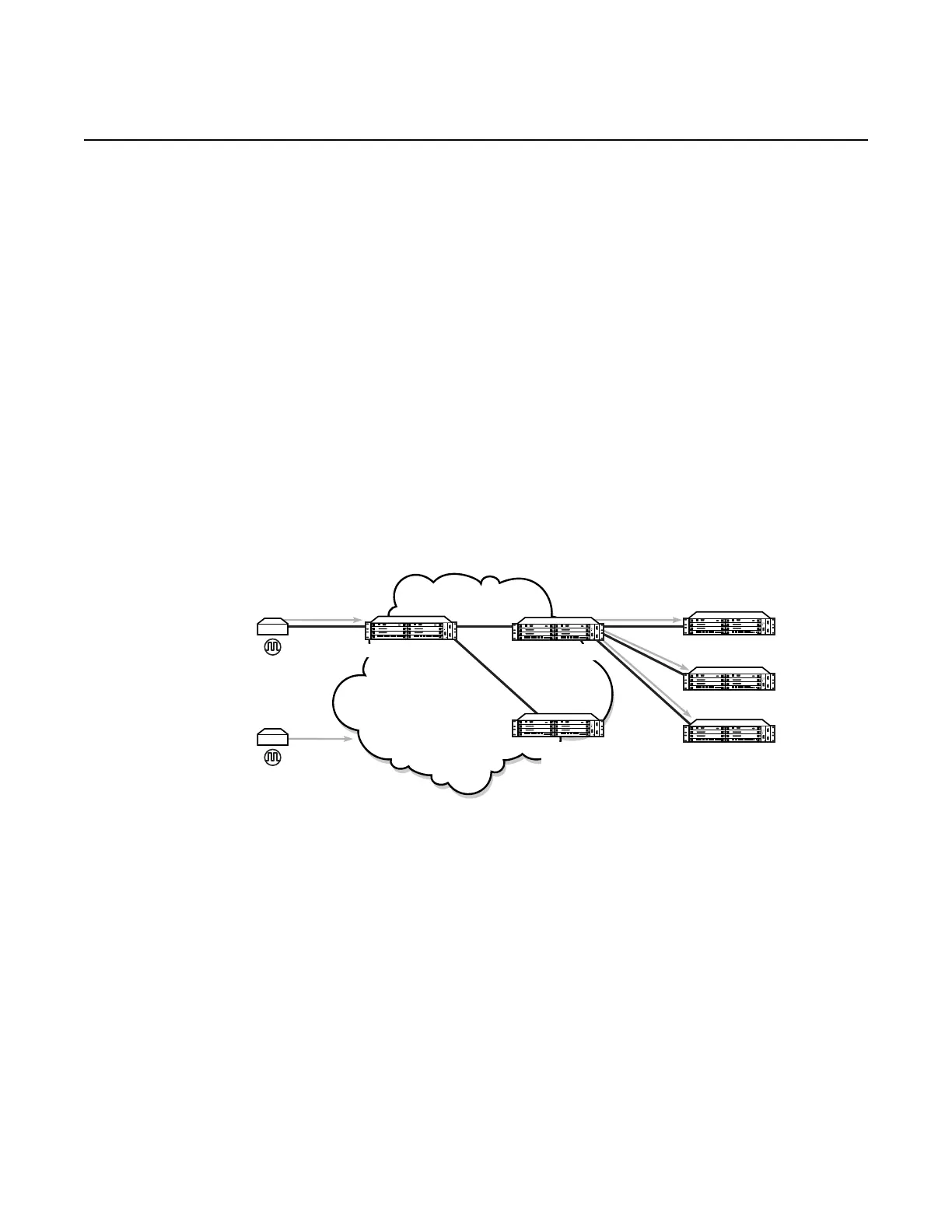Basic System Configuration Guide System Management
Edition: 01 3HE 11010 AAAC TQZZA 243
6.4.6.6 PTP Boundary Clock For Frequency
The 7705 SAR supports boundary clock PTP devices in both master and slave
states. IEEE 1588v2 can function across a packet network that is not PTP-aware;
however, the performance may be unsatisfactory and unpredictable. PDV across the
packet network varies with the number of hops, link speeds, usage rates, and the
inherent behavior of the routers. By using routers with boundary clock functionality in
the path between the grand master clock and the slave clock, one long path over
many hops is split into multiple shorter segments, allowing better PDV control and
improved slave performance. This allows PTP to function as a valid timing option in
more network deployments and allows for better scalability and increased
robustness in certain topologies, such as rings.
Boundary clocks can simultaneously function as a PTP slave of an upstream grand
master (ordinary clock) or boundary clock, and as a PTP master of downstream
slaves (ordinary clock) and/or boundary clocks. Figure 20 shows the operation of a
boundary clock.
Figure 20 Boundary Clock
The PTP boundary clock capability is implemented on the Ethernet ports of the
platforms listed in Table 25 and on the cards listed in Table 26.
The 7705 SAR-8 can support up to six boundary clocks and the 7705 SAR-18 can
support up to eight boundary clocks. The fixed platforms listed in Table 25 can each
support one boundary clock.
Packet
Network
1588v2
Grand
Master
1588v2
Grand
Master
21308
PTP Slave
PTP Slave
PTP Slave
PTP Boundary
Clock
PTP Boundary
Clock
PTP Boundary
Clock

